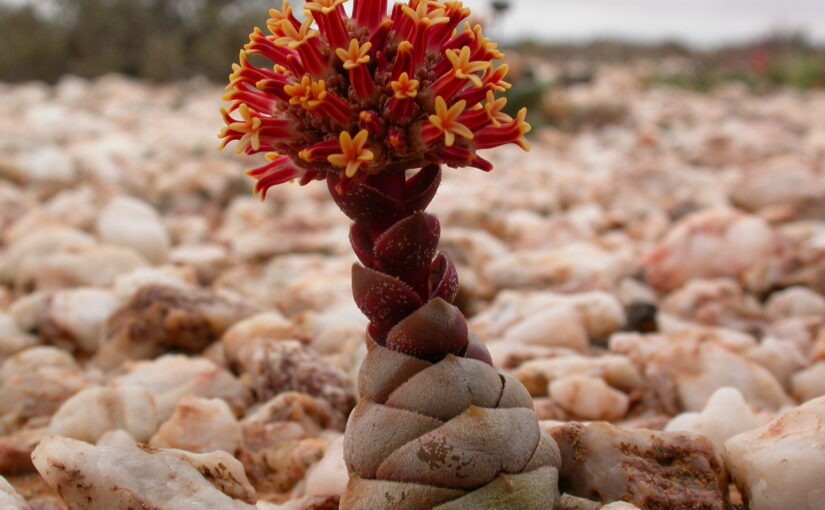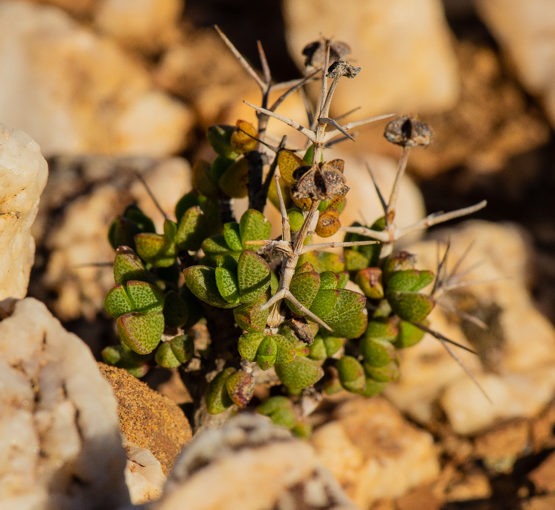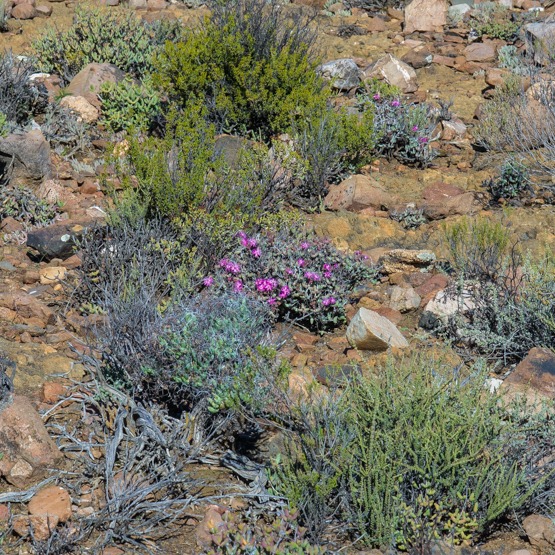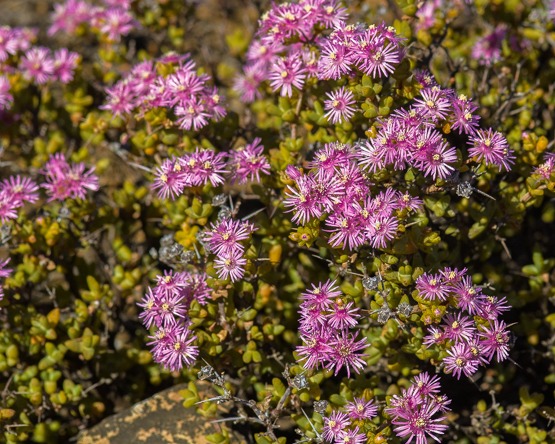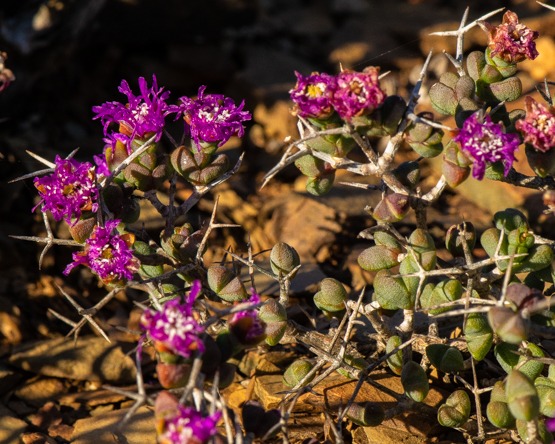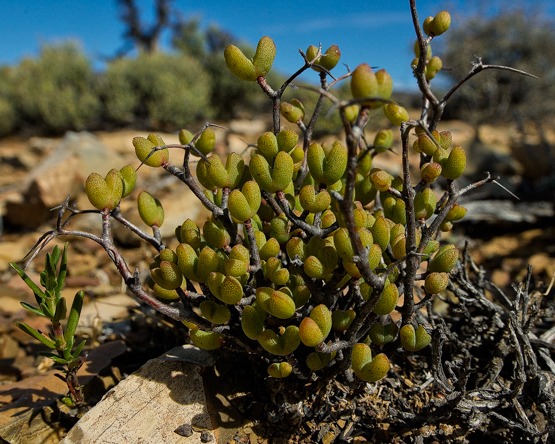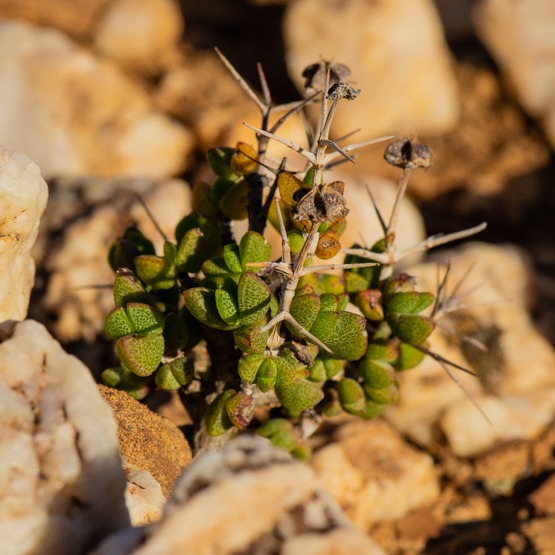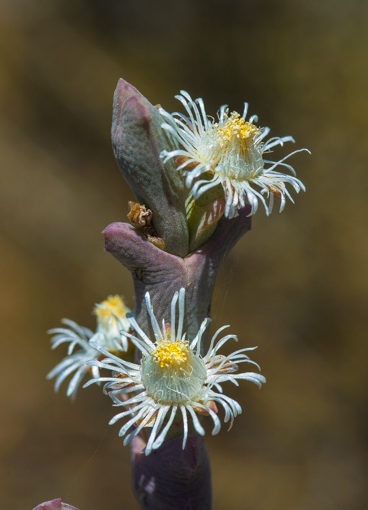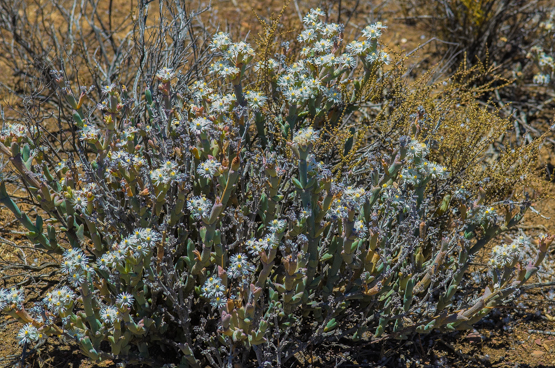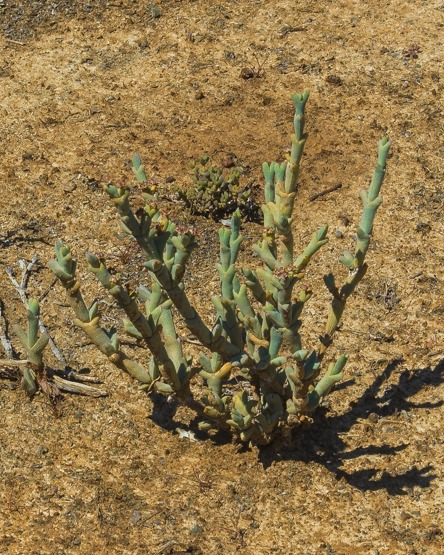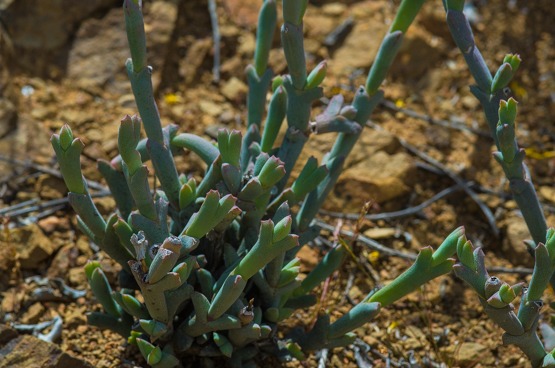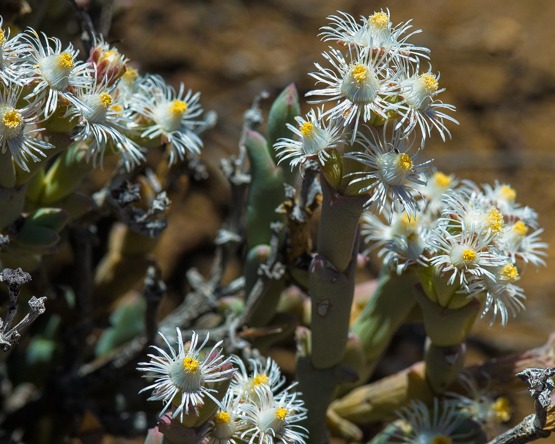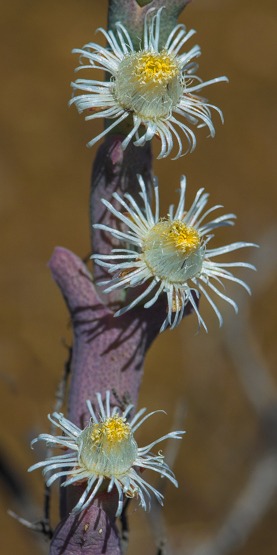
Guest column by Theo Heijnsdijk
C. columnaris was described as early as 1778 by the Swedish physician and botanist Carl Peter Thunberg. He has been called ‘the father of South African botany’ and ‘the Japanese Linnaeus’. From 1772 to March 1775 he was in South Africa and it is certain that in September 1772 he collected plants in the Little Karoo, one of the areas where this species occurs. From 1775 to 1778 he was a medical doctor in Deshima, the Dutch settlement in Japan. On his way to Amsterdam, he spent another 2 weeks in South Africa in 1778. It is plausible that Thunberg collected the plant himself or at least saw it in its natural habitat and therefore it surprises me that he gave it the name columnaris (= columnar).
In nature, C. columnaris is almost spherical, flat rather than elongated. It has been noted several times in literature that the species better could have been named C. globosa (= spherical). Perhaps Thunberg continued to cultivate the plants that he took with him for a while, resulting in them losing their natural appearance. This is a problem that these types of plants tend to suffer from in cultivation.
English-speaking people often use the name ‘khaki button’ which, in addition to the shape which the plant assumes in the dry season, also refers to the distinctive color that the plants adopt (see fig. 1. Photo Winfried Bruenken).
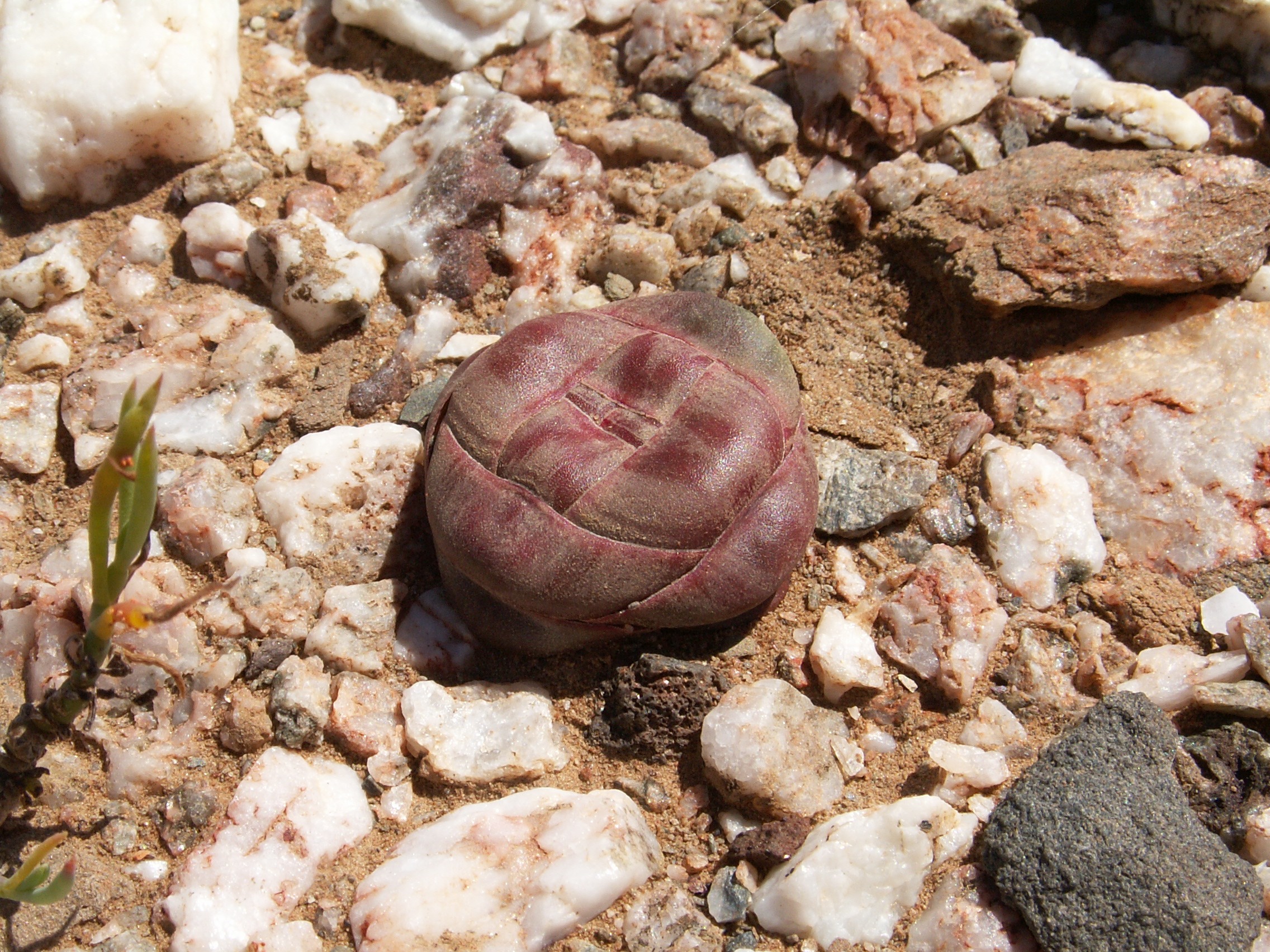 Fig 1
Fig 1
The Afrikaans name ‘koesnaatjie’ for this plant also refers to the flattened convex appearance. A naatjie, also called naartjie, nartjie or nartje is a small citrus fruit that is halfway between a mandarin and a tangerine. Koes means in hiding, withdrawn. A mandarin in hiding more or less, probably referring to the way in which the plant partially withdraws into the ground in the dry season (I assume that the plant does not taste like a mandarin, even if it is edible). On the internet I found the following description of the koesnaatjie:
“A koesnaatjie is a succulent plant found in the dry western and southwestern regions of the Cape. The plant has thick, fleshy, oval-shaped leaves which are fused at the base and fold tightly over each other like roof-tiles, so that the plant has a compact appearance, and it is edible. Only once does it develop an inflorescence with densely congregated cream to yellow flowers after which the plant sets seed, withers and dies”.
In the 20’s and 30’s of last century, the Dutch monthly magazine ‘Succulenta’ regularly wrote extensively about this plant and the differences between nature and cultivation were always pointed out in detail. For example, in the November 1935 issue I read:
Miss W. v. A. in B. writes: “Can I take cuttings of an etiolated Crassula columnaris? They are so ugly with that brown piece of stem. What causes these plants to grow so spindly here?”
And the editors’ answer:
“The proper cultivation of highly succulent Crassula species in our climate is not easy. Many of these plants originate from the Karroo highlands. The average rainfall there is 4.47 inch ( ± 114 mm). In our country, an average of 700-800 mm rainwater falls per year. The rain on the Karroo plain falls mainly in the four winter months, sometimes also in November and December. These two months of summer rain have little influence on growth, but are important for replenishing the water reservoirs of the succulents.
Few deserts have a more desolate appearance in the dry period than the Karroo. There are no green plants to be found, the gullies are dry and the isolated “Koppies” (small mountain peaks) which are scattered here and there in the Central Karroo, seem to reflect the heat like a mirror. During the night a cool S.E. breeze prevails. The imaginary line which divides the districts into regions with summer or winter rains, runs through the Central Karroo near Beaufort West. In some winter nights the temperature drops below freezing point, and the mountain peaks are sometimes covered with snow, which, however, rarely falls on the plateau itself. The average daily temperature difference is large, i.e. 30° F (= 17 °C). Due to the intensely dry air, the summer heat is not very oppressive. In the Northern Karroo the average rainfall per year is even less, in the Western part 2 inches, so 51 mm per year. The average summer temperature in the shade is 110° F (= 43 °C). This gives us an idea of the conditions under which the highly succulent Crassulas grow in their homeland and makes us understand that it is therefore not easy for these plants to maintain their beautiful, stocky appearance here. Crassula columnaris occurs near Whitehill, the first train stop past Matjesfontein. Jacobsen mentions Namaqualand as habitat. The annual rainfall there is about 6 inches = ± 150 mm. Crassula columnaris allows you to take cuttings (the best time for this is August because the plant starts to grow in this month. After rooting, be very, very economical with water. The entire structure of the plant indicates moisture absorption from the air. In summer provide as much sun and fresh air as possible; the plants may turn reddish brown.”
It is remarkable that between 1923 and 1942, no less 5 times was written extensively about C columnaris in ‘Succulenta’ and after that, which is now over 70 years, nothing at all. The name is only mentioned in passing once in a while.
As can be seen from the above, C. columnaris belongs to the group of winter growers, which have their resting period in summer and should receive minimal water then. In many books a winter temperature of at least 15 °C is recommended, but in my experience that is not good at all. Such a high temperature combined with the application of water promotes growth and with the short days and the low light intensity in winter, this means an elongated, unnatural shape. I have never noticed that the temperature in my greenhouse – which I try to keep at least 8 °C in the winter (with varying success) – would harm the well-being or flowering of such plants.
Other members of the group of winter growers are C. alstonii, barbata, deceptor and pyramidalis. They are best grown in sandy soil with a small proportion of humus.
C. columnaris is monocarp, which means that the plant dies after flowering. This prompted Gordon Rowley in his book ‘Crassula’ to describe cultivating C. columnaris as “a passing pleasure”. Beautiful plants of the species are rare in our collections. Seedlings become elongated and imported plants immediately bloom and then die. To keep the plants somewhat presentable, Rowley recommends a starvation diet with plenty of sun and fresh air.
Although the first signs of flowering also announce the impending death of the plant, it is still fascinating to see how the inflorescence develops. It starts with the closed rosette bursting open at the top, as it were, to provide room for a compact arrangement of flower buds. See Fig. 2.

Fig. 2
This is a plant I bought as a young seedling with the name “C. columnaris Lemoenshoek” at the Special Plant Market in Nijmegen. Lemoenshoek is a farm about 40 km east of the village of Barrydale in the Little Karoo. The photo was taken on December 3, 2012. The diameter of the plant in the photo is 4 cm and its height is about 3 cm. In those 3 cm, 7 pairs of leaves are pressed together. Once in full bloom, the plant body is completely hidden from view by the numerous white flowers. See the photo of Fig. 3, which was taken on January 19, 2013. The name ‘shaving brush crassula’ used in English-speaking countries needs no further explanation.
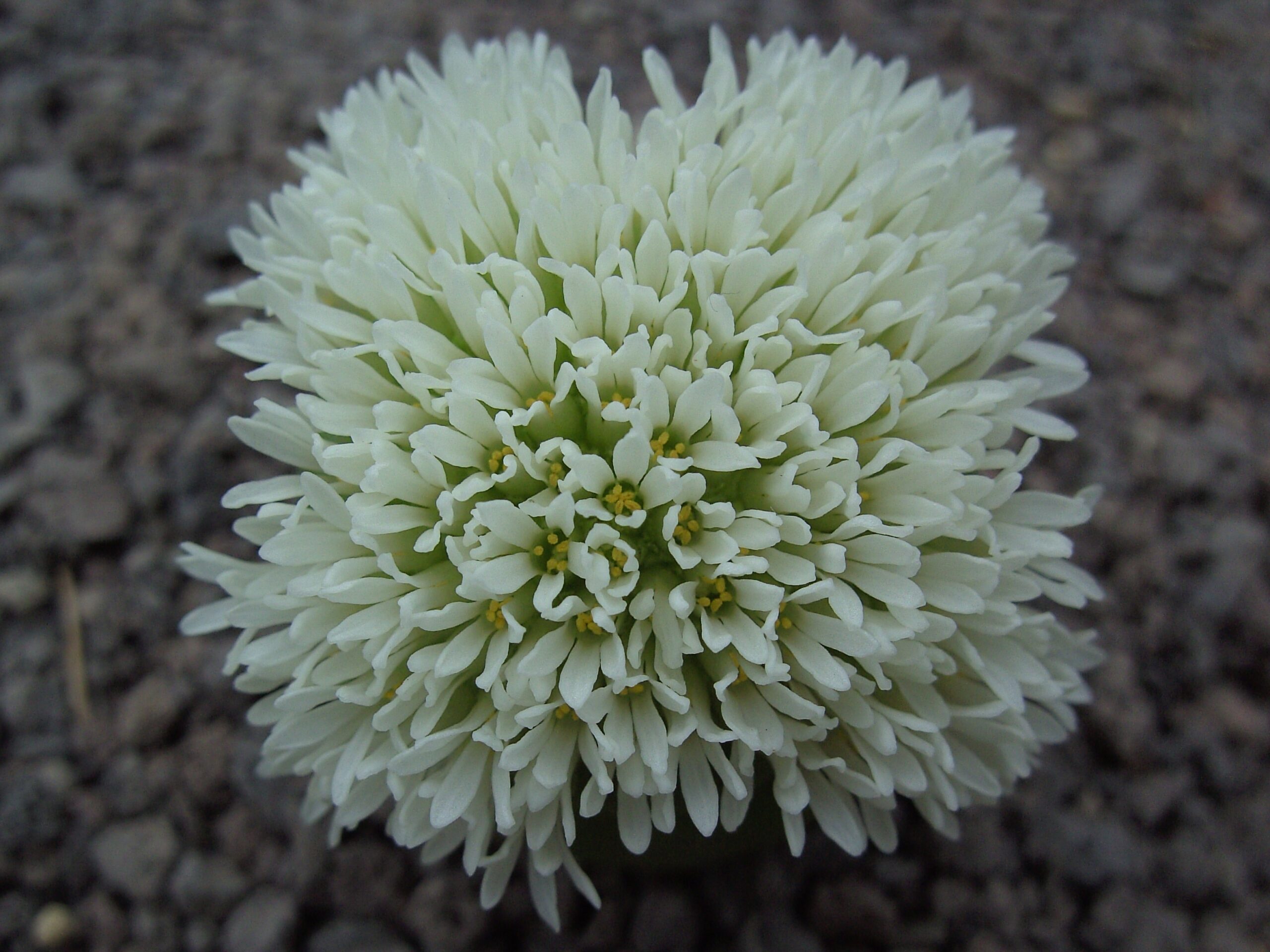
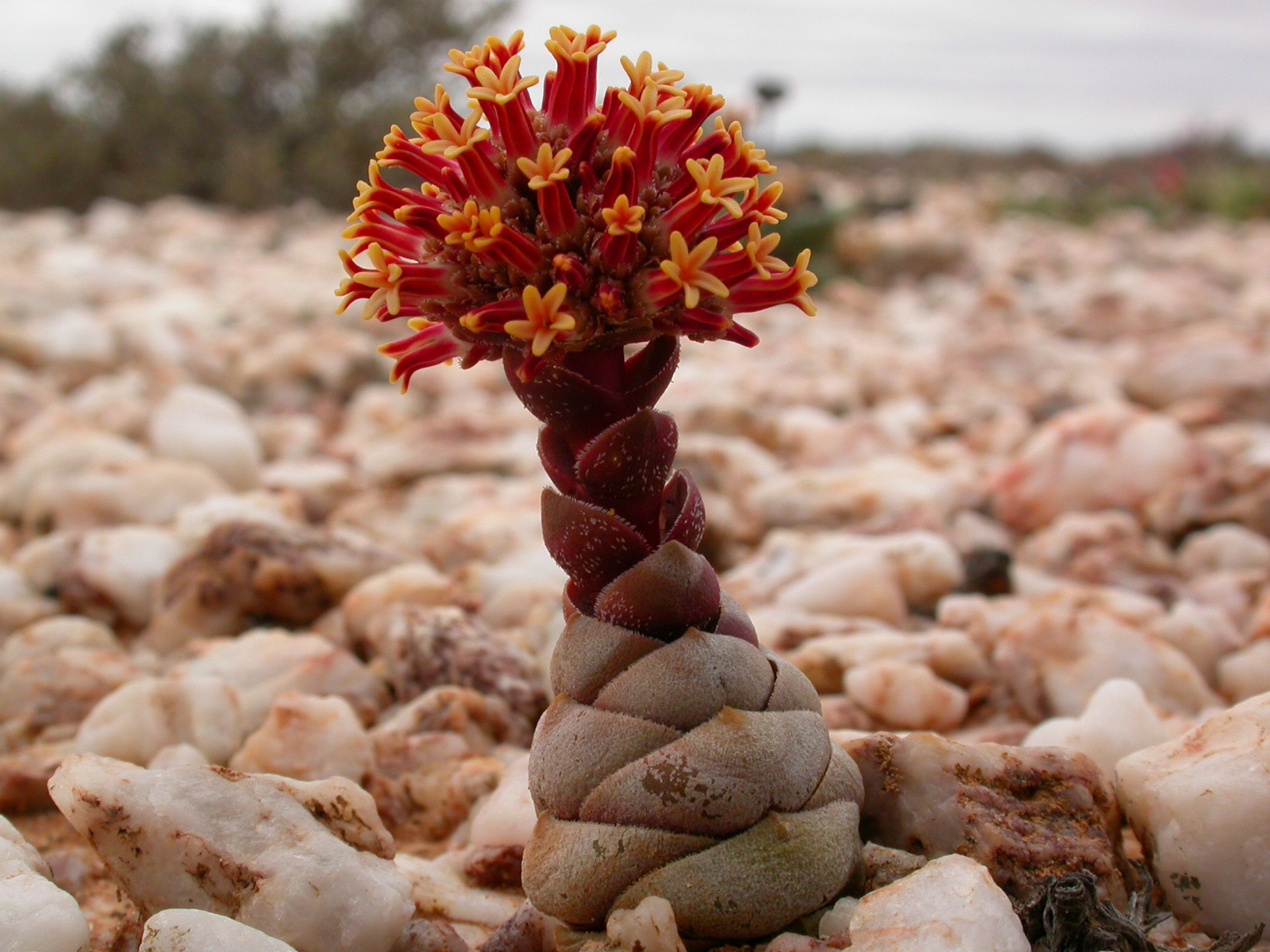 Fig 4 C. columnaris ssp. prolifera in the Knersvlakte (photo by Sofia Etzold, with thanks to “Photo Guide to Plants of Southern Africa”). In Afrikaans, this variety is called ‘sentkannetjie’. ‘Sent’ in this expression is derived from the English ‘scent’ and kannetjie stands for bottle. This does justice to both the plant’s shape and the flowers’ sweet smell.
Fig 4 C. columnaris ssp. prolifera in the Knersvlakte (photo by Sofia Etzold, with thanks to “Photo Guide to Plants of Southern Africa”). In Afrikaans, this variety is called ‘sentkannetjie’. ‘Sent’ in this expression is derived from the English ‘scent’ and kannetjie stands for bottle. This does justice to both the plant’s shape and the flowers’ sweet smell.
Hybrids of C. columnaris are uncommon, but H. R. Toelken in the Flora of Southern Africa mentions a putative natural hybrid C. alpestris ssp. massonii x C. columnaris ssp. columnaris and gives the following information:
“The plants superficially resemble C. columnaris subsp. columnaris with its clasping leaves producing an erect column c. 15 mm in diameter. However, the plants are longer than broad and have terminal and axillary inflorescences and the leaves are bluntly acute as in C. alpestris ssp. massonii. The putative parents have been recorded from the area”.
Finally: C. columnaris should not be confused with C. columella, which has many similarities with C. columnaris in name and appearance. This plant forms thin, branching, square columns of up to 1.5 cm thick and 5 cm high (columella means ‘small column’), consisting of tightly packed (tile-like) leaves. See below.
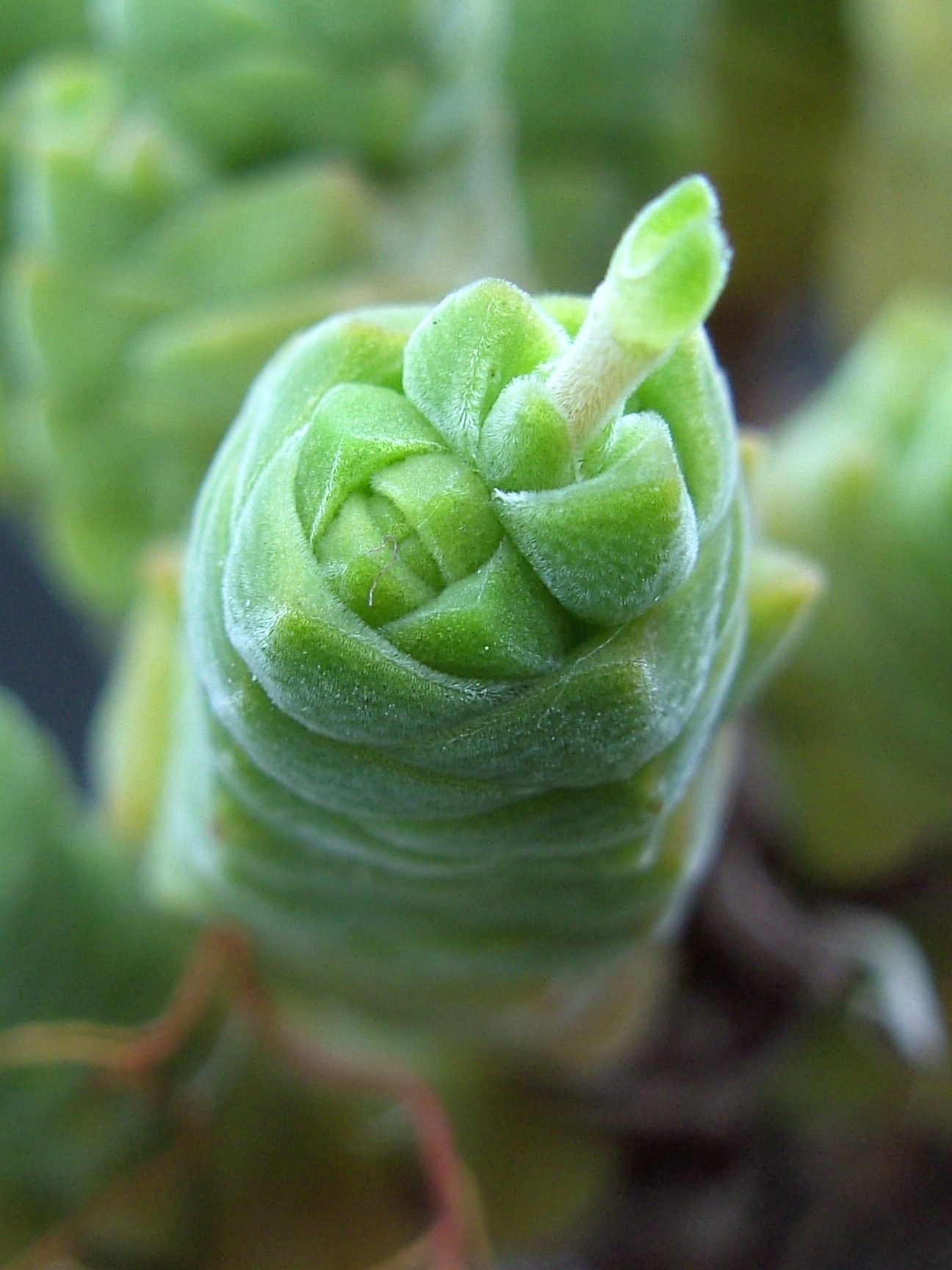 Fig. 5
Fig. 5
Crassula columella also flowers terminally but does not die afterwards. Next to the faded head (right), one or two new shoots arise. It also flowers terminally, with small, inconspicuously colored flowers on a stalk. Unlike C. columnaris, the stem does not die after flowering but forms 1 or more side shoots directly next to the flower stem, so that a low bushy plant is developed. For us, plant fanciers, this has the great advantage that the plant not only becomes more beautiful after flowering, but also provides a lot of easily rooting cuttings. This species is also hardly prone to the etiolation that C. columnaris so easily suffers from.
Literature:
Laren, van, A,J. (1931). Succulents, Verkade’s factories N.V., Zaandam.
Rowley, C. (2003): Crassula, Cactus & Co.
Swüste, F (1935). Vragenrubriek, Succulenta 17 (11) p. 175.
Thunberg C.P. (1778). Nova acta physico-medica Academiae Caesareae Leopoldino-Carolinae Naturae Curiosorum.
Photo Guide to Plants of Southern Africa, www.southernafricanplants.net
First published in Succulenta 92:5, October 2013. Translated from Dutch by FN.
For more habitat pictures and other info follow this link: Crassula columnaris (part 1 of 3)
